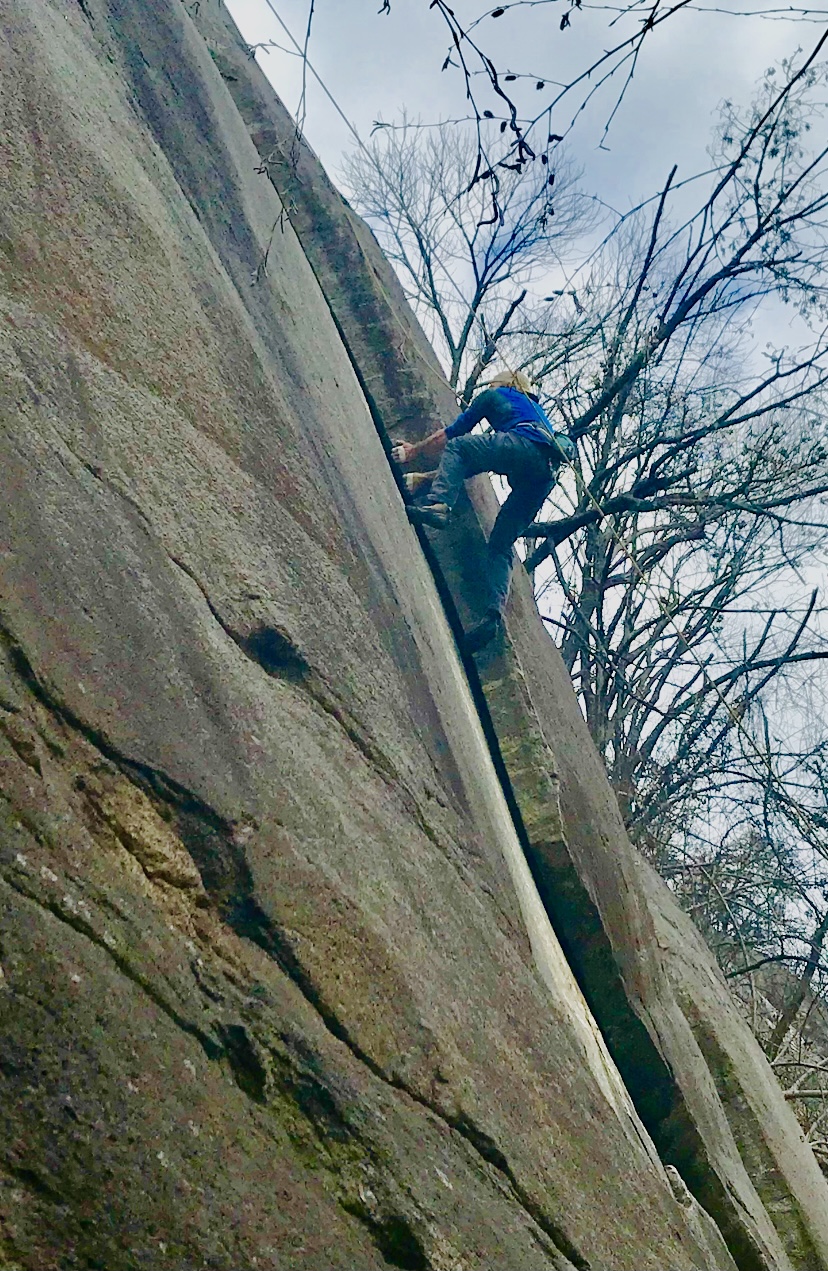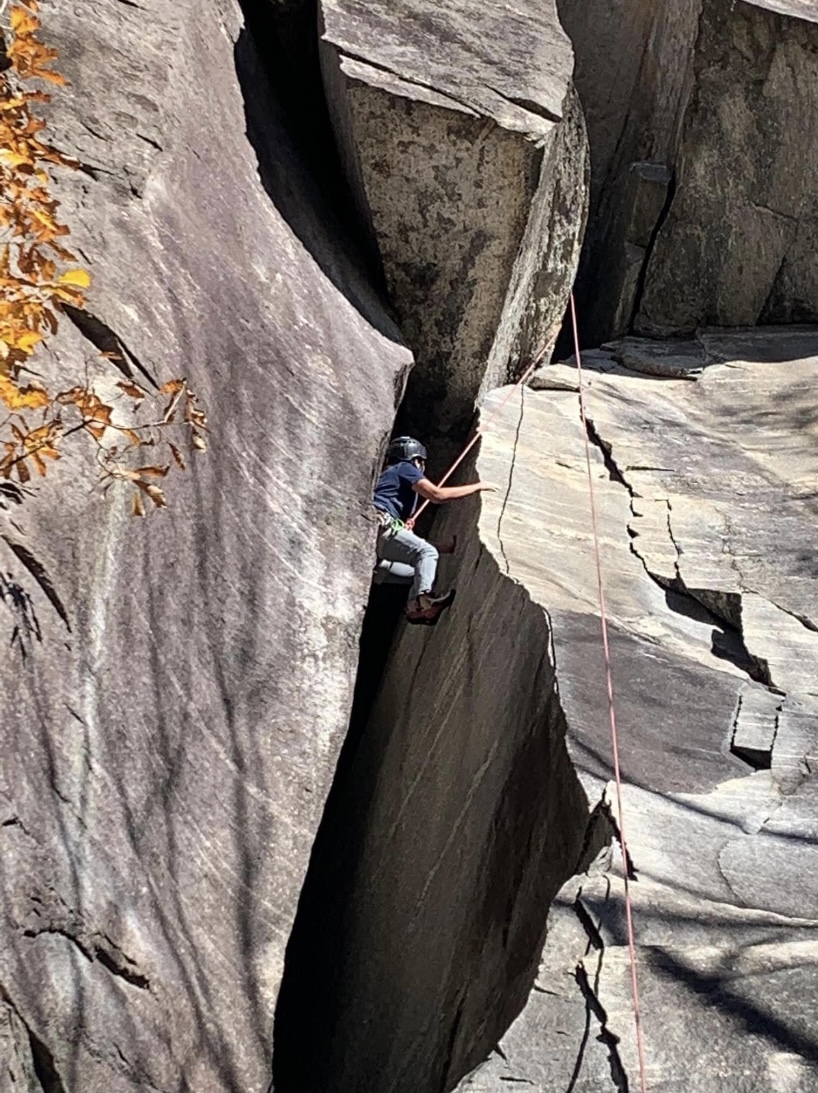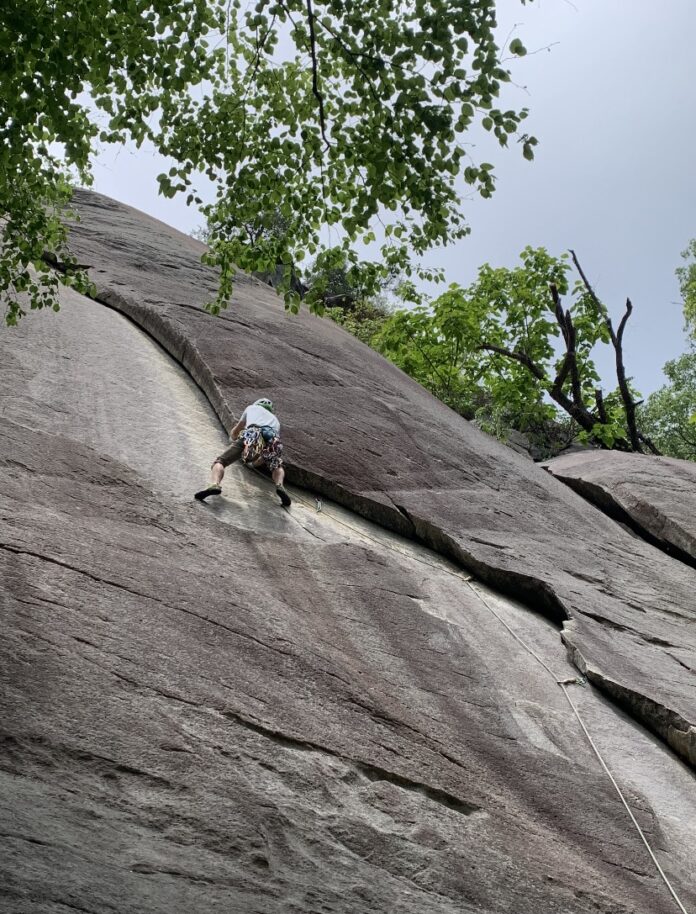There’s a route in North Carolina that’s a moderate climb. But it kicks my ass every time I attempt to climb it. It’s my anti-style — an overhanging crack that requires either great skill or great upper body strength to ascend. And I have neither.
Before today, I hadn’t tried the climb in over a year, and I hoped that my long weekends at the crags would’ve permitted some progress on this particular project. Afterall, a year ago, I didn’t know how to build anchors or gracefully coil ropes (some might argue that I still haven’t accomplished the latter task). And I know that I’ve gotten stronger. So, why shouldn’t I be able to make it up this “easy” crack climb?
But I wanted to measure my progress on this challenging route. So, I slipped my crack gloves on and began the ascent.
Navigating My Nemesis Crack Climb
The first 15 feet flew by quickly. There were feet when I wanted them. My hands gracefully made their way up each hold. I barely noticed the growing gap between me and the ground. And then I made it to the crack.
You have to scrunch your arms high enough in the crack to land your right foot in the slot, which takes a fair portion of your weight off of your upper body. I landed my foot in the crack. But it wasn’t high enough to stay lodged against the wall. It slipped, and I came tumbling down.
My Next Attempt
On my next try, I successfully lodged my foot in the crack, but the bulk of my weight was still on my upper body. And my faith wavered when I looked up at the remaining 20 feet of overhanging crack. The exertion wasn’t going to let off any time soon.
Buried up to my elbows in granite, I began to feel the skin ripping from the tops of my arms. Flesh melted away. And then it became about overcoming the pain while trying to complete the climb. Then my feet slipped. My knees hammered into the wall, and I let out a grunt. But I had to try again. And again. And again.
Finally, I decided to try to lieback the route — which requires a lot more energy but it’s technically easier than crack climbing (if you don’t know how to crack climb).

I made it through the tough section of the climb using this strategy. The progress showed a hair of difference between my strength from a year ago and my strength from today. And after all of the hours I’d put in at the crag, it felt pretty demoralizing to see myself struggle with this same route.
After flopping around, painfully watching my skin turn red and road-rashed, I asked my belayer to let me down. He obliged, and I left the route with my tail between my legs for the second time. Today would not be my day.
What I Learned
On most days, I feel like a shitty climber. I don’t look like the people who are pictured in climbing advertisements. Nor do I particularly care to climb ever-harder grades, continuously putting myself in dangerous positions. It isn’t a sport that comes naturally to me. But I like the challenge of it. And I think it’s important to continuously check your ego, anyways.
Mark Twight wrote about the harm that’s been done to climbing by our “acquisitive” society. It has become all about making it to the top, peak bagging, or checking routes off of our lists. And while doing those things feels good, the bulk of the work is done in the space between accomplishments. And that’s where I existed today, monitoring my self-doubt and wavering resolve.
I also realized that when you go into a climb expecting to fall, you will fall. And then the line between your capabilities and your ability to execute a route becomes blurry.

“A great adventure without success is far superior to a climb where everything goes as planned.”
― Tommy Caldwell, The Push: A Climber’s Journey of Endurance, Risk, and Going Beyond Limits
For More Inspiration:















